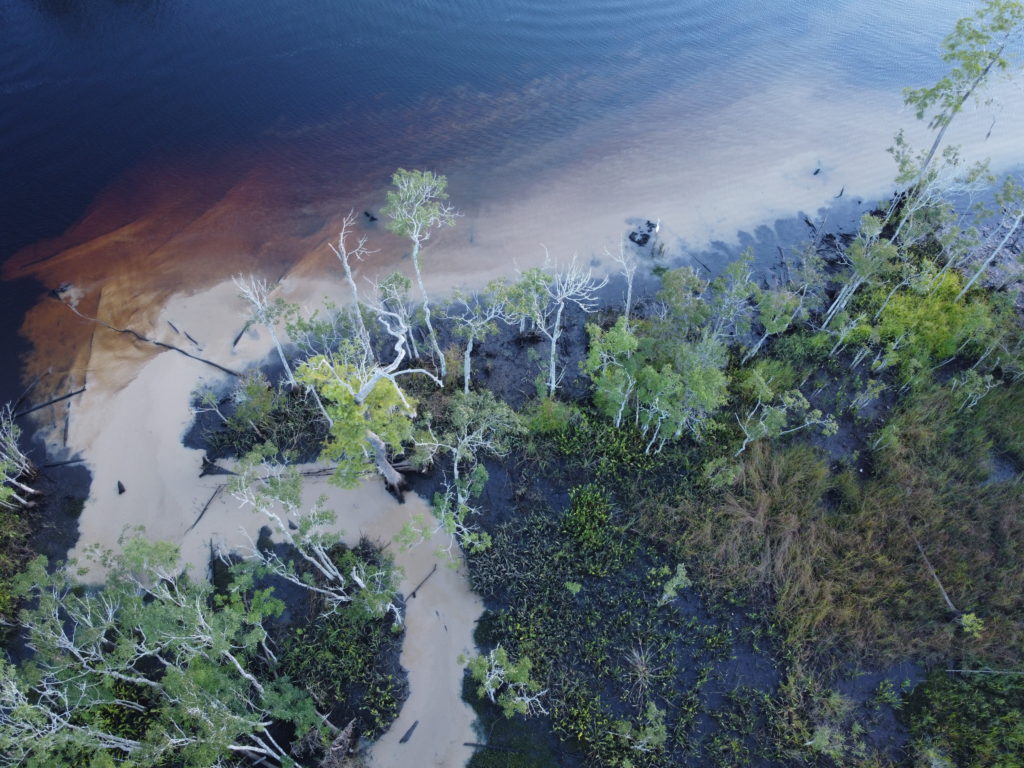
Photo Credit: Michael Best
Recently, a contractor was caught in the act discharging muddy water into adjacent wetlands protected by a conservation easement and Pottsburg Creek thanks to the watchful eye of Grove Park residents. Neighbors feared for several weeks that the dirt excavation project was damaging Pottsburg and the surrounding floodplain, but they refused to stand by and allow their beloved creek to be polluted.
Due to the community’s determination to protect their creek, the Florida Department of Environmental Protection (FDEP) is in the process of taking enforcement action against the polluting company. Read the Grove Park Boulevard – 7-22-2021- Warning Letter No. WL21-159 recently issued by FDEP. The photos and videos submitted to FDEP by the neighborhood residents, including drone footage by Michael Best, are proving to be critical in the effort to hold the contractor accountable.
Construction-site runoff is a significant threat to the ecological health of the St. Johns River and its tributaries. When contractors don’t install or properly maintain required erosion controls, or BMPs (Best Management Practices), muddy water can run off into our waterways during rainfall events. Have you ever seen those black screens or fences that surround a construction site? This is an example of a BMP installed to prevent dirt from leaving the site.
In some instance, standing water on a construction site is intentionally pumped into nearby gutters, storm drains, and creeks. In either case, these are illegal stormwater violations that can and should result in enforcement actions by our regulatory agencies.
When muddy water from construction-site runoff is discharged into our creeks and rivers, the suspended sediments and turbidity can block light to aquatic plants, smother aquatic organisms, clog or irritate the gills of fish, reduced dissolved oxygen, and even carry contaminants and pathogens into our waterways.
There are also economic consequences associated with sediment runoff. Waterways clogged with sediment can reduce property values and property taxes by limiting access for boating. In addition, dredging and restoration projects to fix sedimentation problems can cost millions of dollars to complete.
So, keep you eyes open for muddy water flowing into nearby storm drains or waterways and construction sites without proper erosion control BMPs installed. If you see a potential violation, contact St. Johns RIVERKEEPER and report to the appropriate environmental agencies. Click here for a list of agency contacts. As evidenced by the Grove Park community, concerned and engaged citizens can make a difference for our St. Johns River and its tributaries!